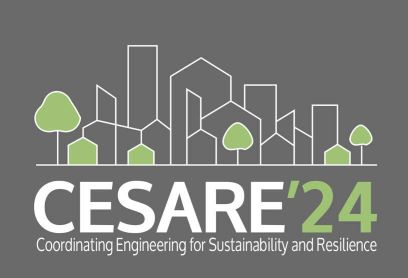Speaker
Description
Increasing concern over higher frequency extreme weather events is driving a push towards a more resilient built environment. In recent years, there has been a growing interest in understanding how to evaluate, measure, and enhance demand-side energy resilience. Resilience is the capacity of the demand-side to maintain key operations concerning human well-being and survival, and providing energy-related services during power outages caused by and/or coupled with natural disasters. In addition to human health and safety, many stakeholders are keenly interested in the ability of buildings to allow operation continuity and minimize business disruption.
Cold load pickup refers to the significant demand surge in a power grid, as multiple consumers simultaneously start using electrical devices after an outage or a reduced demand period. High cold load pickup overwhelms the distribution network, causing voltage drops and triggering protective measures such as load shedding; In these situations, if the grid is unable to handle the increased load, localized brownouts occur; meanwhile, load shedding redistributes demand, potentially overloading other areas, thereby propagating voltage reductions and ultimately resulting in chain blackouts due to system instability.
Electric space heating is widely adopted in the residential sector due to the low initial and operational costs. In the province of Québec, a remarkable 82% of households have reported using electricity for space heating, more than half of which indicated electric baseboard heaters as their primary heating system [1]; therefore, the region's demand profile is strongly coincident with the demand profile of the residential sector. In cold regions with a winter-peaking grid, like Québec, estimating the cold space-heating load is often critical as electric space-heaters usually demand more electricity than typical electric home appliances or lighting systems. Grid operators have to anticipate the customers’ cold load pickup behaviour to ensure the stability and reliability of the network. The ice storm of January 1998, during which falls of 80-100 mm of freezing rain pulverized parts of the Hydro-Québec distribution network, blacking out more than 4 million people, has left one valuable lesson: the residential sector is subject to significant socioeconomic losses when key operations, such as heating, ventilation, and air-conditioning, are disrupted due to a power outage [2, 3].
Archetype gray-box models provide a generic representation of common zone/building types and thus enough information to evaluate the effect of control sequences in the short term, helping to make near-optimal decisions [4]. In this paper, using an archetype 3R2C network, the thermal response of a single-family house to a prolonged outage under cold weather is simulated. The archetype model is calibrated with data from an unoccupied research house in Québec, with electric baseboard heaters in each room. The objectives of this simulation are to 1) predict the free-floating behaviour of indoor air and 2) estimate the cold space-heating load as the indoor air rebounds to the comfort range. Next, to explore the impact of adopting stand-alone generation/storage systems, the simulation is repeated assuming a residential-size PV/battery system optimally feeds the baseboard heaters during the outage, with a model-based predictive control approach. The free-floating indoor air temperature rapidly deviates from the comfort range with an average of -0.43 ˚C/h; however, optimal operation of the stand-alone PV/Battery system boosts the overall energy resilience by decelerating the heat loss with an average deviation of -0.19 ˚C/h.
References
[1] Statistics Canada. Households and the Environment: Energy Use 2011; Accessed January 2015: www.statcan.gc.ca
[2] Kamwa, I and Liu N. (2023). How to keep the lights on: Lessons from major blackouts over the last 35 years. In IEEE Power and Energy Magazine (Vol. 21, no. 3, pp. 4-11)
[3] Lecomte, E. L., Pang, A. W., & Russell, J. W. (1998). ICE STORM ’98.
[4] Candanedo, J. A., Vallianos, C., Delcroix, B., Date, J., Saberi Derakhtenjani, A., Morovat, N., John, C., & Athienitis, A. K. (2022). Control-oriented archetypes: a pathway for the systematic application of advanced controls in buildings. In Journal of Building Performance Simulation (Vol. 15, Issue 4, pp. 433–444)
| Keywords | cold load pickup, residential sector, energy resilience, gray-box modelling, power outage |
|---|---|
| Topics | • Impact of climate change on the built environment • Sustainable resilience of systems in the built environment • Building physics |

